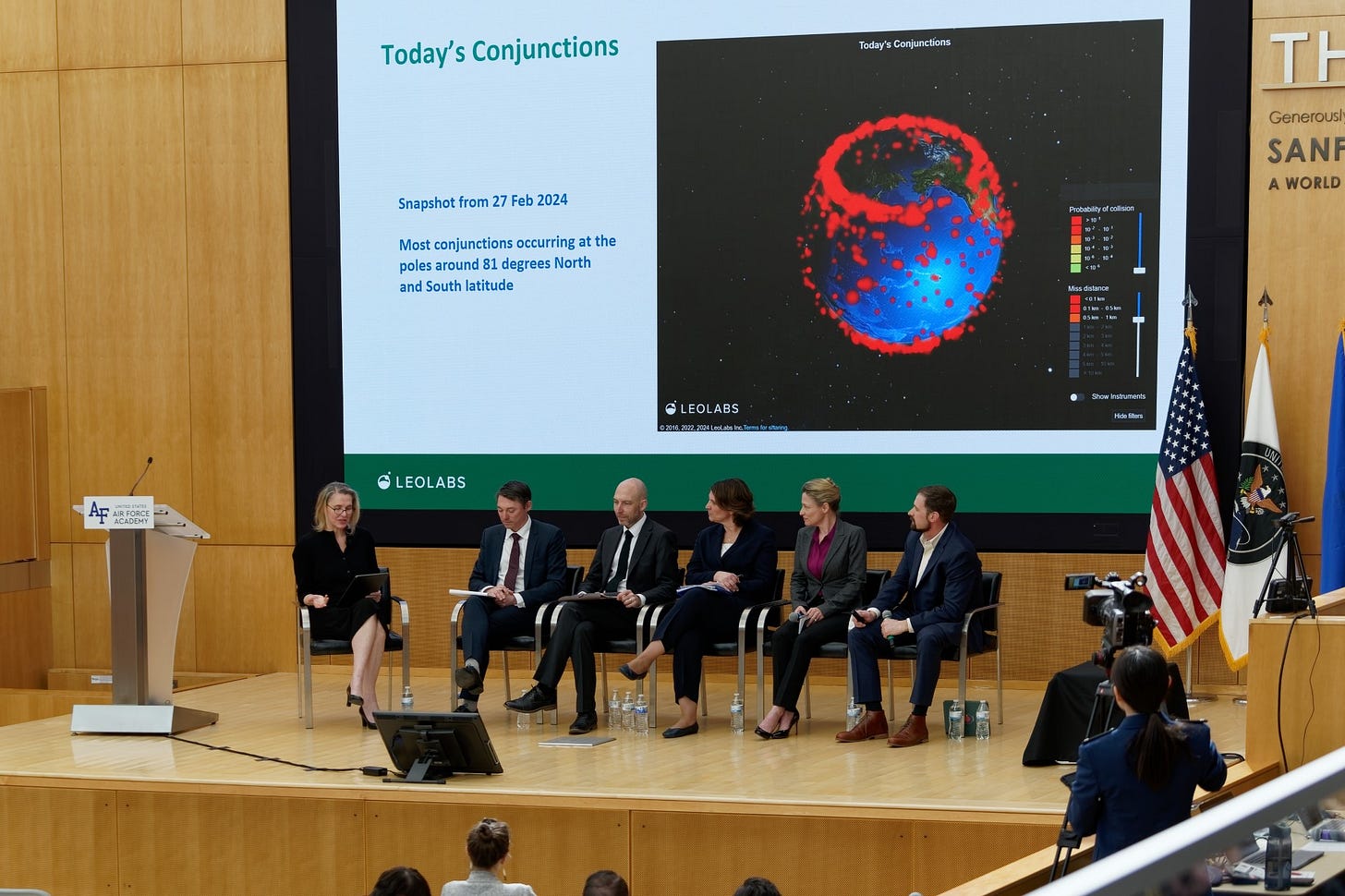Playing catch-up
Hey there! As I wrote in an earlier post it has been, and remains, a really busy period. Nevertheless, I want to share with you an interesting episode, recorded in March, from the Air Force Academy’s Polaris Hall.
On March 5, the U.S. Space Command’s Office of the Staff Judge Advocate and the U.S. Air Force Academy’s Law, Technology and Warfare Research Cell brought me to Colorado Springs, Colorado, for their USSPACECOM Legal Conference 2024.
This was the fourth annual gathering of legal minds from across the United States that concern themselves with the intersection of military and space law. My task was to shepherd the event’s second panel discussion, titled, “Mitigating Congestion and Space Debris: The Interagency Guidelines and Beyond”.
As is my penchant, I focused much of the discourse on the “Beyond”, where technology currently under development, is going to necessitate the “prototyping” and “road-testing” of national policies and multilateral international agreements that have yet to be drafted. I wanted to understand the legal challenges posed by salvage operations.
Under the Outer Space Treaty, a man-made space object, no matter its operational status or whether it poses a hazard to space traffic, remains the “property” of the nation that sent it into space. So a defunct satellite, a spent second stage fuselage, or even the tool bag that was lost during a spacewalk last November, cannot be “interfered with”, or touched, without explicit permission from the nation that owns it.
We have the tested technology to clean up space junk. Soon we will have a space foundry that can recycle space junk into useful and monetized commodities for fueling spacecraft and building space stations.
So how could salvage and recycling operations actually work… Legally? Without it being considered an aggressive adversarial activity?
You can listen or watch this discussion. I’ve included the Academy’s video directly below.
Thank you to our generous sponsor, TE Connectivity!

Who’s in this episode
Charles Stotler - Professor of Practice and Director, Center for Air and Space Law, University of Mississippi School of Law
Gabriel Swiney - Director Policy, Advocacy, and Int’l Division, Office of Space Commerce, NOAA, U.S. Department of Commerce
Lee Steinke - Chief Operating Officer, CisLunar Industries
Victor Gardner - Global Head of PreSales and President, LeoLabs Federal, Inc.
What’s caught my eye
"World first UK prototype could pave the way for constant energy all the time - from space", Thomas Moore writes for SkyNews.com that, “Oxfordshire-based Space Solar plans to power more than a million homes by the 2030s with mile-wide complex of mirrors and solar panels orbiting 22,000 miles above the planet.”
In the Eurasian Times article “Axe Falls On China’s Secret “Space Base”, Ashish Dangwal In The Americas; Argentina May Inspect Espacio Lejano Station”, Ashish Dangwal explains an interesting sovereignty and security development in Argentina. To give some more context on the situation, I recommend listening to the episode, “What You Need to Know About The Great Ground Station Game Part 2”. and if you want to understand what’s happening in the High North, I recommend listening to “What You Need to Know About The Great Ground Station Game Part 1”.
On Monday, April 15, Switzerland became the 37th Artemis Accords signatory, followed by Sweden on Tuesday. The Artemis Accords is a U.S.-led non-binding agreement, wherein signatories agree to adhere to a set of principles of responsible behavior. Internationally, it’s seen as a geopolitical counterpoint to China’s International Lunar Research Station, which counts Russia, Venezuela, Egypt, Thailand, and others as partners. In a possible snub, earlier this month Turkey, a NATO ally, submitted an application to join the ILRS project in hopes of becoming the 10th partner nation.
Ad Astra!
Laura














